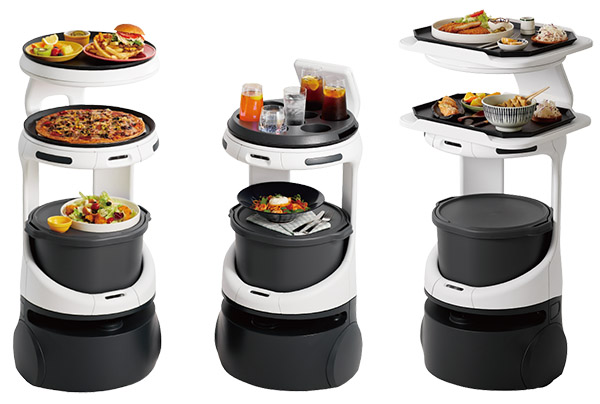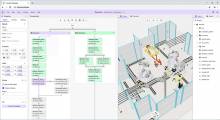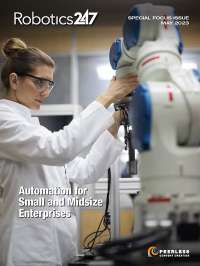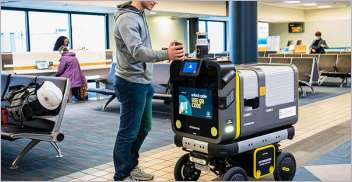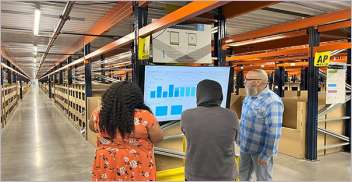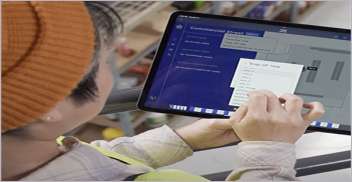In Bradenton, Fla., the owner of the Anna Maria Oyster Bar Landside has two robots that wheel out food to those dining in the restaurant. They are ideal assets for performing a task that people ordinarily perform.
Today, robots can be used in small and medium-sized businesses (SMBs) to perform innumerable tasks from cleaning and sanitizing to sweeping, cutting grass, serving food, fetching parts, and just about anything they can be programmed to do. As service and commercial robots become more affordable, SMBs can now consider different options.
In the case of the Oyster Bar Landside, robots not only help serve customers, but they're also novelties that entertain restuaurant customers. Owner Jim Horne explained to local news that he acquired the first system, Pearl, in December 2021 from Bear Robotics, which was beta-testing the collaborative mobile robot.
Bear Robotics later upgraded the robot to Pearl 2.0, which can drive up a ramp with larger rubberized wheels that can traverse any bumps in its path. It also has a gyroscope tray for stabilization when it carries food.
The robots work with servers, making it easier for them to do things at their stations before the robot brings out the food. Restaurant guests have even asked the robot to pose for pictures, and Horne has sometimes dressed them up in tropical garb such as hula skirts as a fun way of integrating automation into his restaurant.
Fitting the robots to SMB environments
Small and midsize manufacturers and supply chain operations have more opportunities to benefit from robots than restaurants do.
“There are several ways that Mitsubishi Electric Automation helps first-time adopters,” said Patrick Varley, a product marketing manager for mechatronics at Mitsubishi Electric Automation Inc. “In addition to our automation products, including robots, we offer flexible pre-engineered solutions that allow our customers to reduce the time it takes to get a system operational and to reconfigure them, should their business conditions require it.”
“Mitsubishi also works with companies specializing in designing and building systems requiring minimal experience to use and reconfigure,” he explained. “We also offer a pre-paid preventive maintenance program for our robots, including five yearly visits and extending the on-site robot warranty to five years. In addition, we offer several training classes.”
As vision, manipulation, and human-machine interaction technologies advance, robotics can address more applications. Many types of robots are available that aren't cost-prohibitive.
Robots can help small and midsize enterprises (SMEs) supplement their labor forces, meet seasonal demands, and perform repetitive or hazardous tasks that a human would ordinarily perform. With robots delivering goods or sanitizing a workspace, human workers can now be deployed to other, more value-added tasks.
“Small/medium businesses typically need more financial and engineering resources to add and maintain automation easily,” noted Varley. “Also, expertise is frequently held by a few key employees with little redundancy. Losing one key person greatly impacts a small/medium business more than a larger one.“
RaaS facilitates adoption
Robotics as a service (RaaS) is a model similar to software as-a-service, whereby an organization subscribes to a service by paying a monthly fee but does not have manage and maintain the assets as it would if it owned them.
With RaaS, robots become an operational expense that is instead paid to someone else, while becoming easier to adopt and scale. This is a useful option for small and midsize businesses, especially as the labor market is strained in many industries.
According to Forrester Research's “Predictions 2023: Automation and Robotics” report, 35% of relevant enterprises plan to integrate physical robotics with mainstream tech. The research firm said that labor shortages are forcing businesses to pursue robot workers to help keep functioning.
Specifically, Forrester predicted that “enterprises that depend on human physical ability will set up robotic centers, explore robots-as-a-service (RaaS) offerings, and begin to blend these specialized technical groups with mainstream technology management.”
Small and midsize businesses outsource the burden
“We are working with some third parties regarding financing, leasing, and RaaS,” noted Varley. “Also, some OEMs we work with offer robotic solutions on a 'pay-per-use' basis. This is calculated either by runtime or products produced. Even though Mitsubishi Electric Automation does not yet offer these services, we work closely with companies that do.”
According to McKinsey & Co., “automation providers that can move toward robotics as a service and act as a single point of contact for maintenance (for both hardware and software) will create a distinctive competitive advantage.”
McKinsey & Co.'s research found that 55% of surveyed industrial players would prefer that a systems integrator act as a single point of contact and provide both hardware and software maintenance.
“By understanding their automation, the end user is in the best position to deal with unexpected issues requiring engineering or programming intervention,” Varley said. “While this requires training and has a learning curve, it ensures that the end user's priorities are the same as those of the person working on the equipment, since they are one and the same.”
“An exception is Mitsubishi Electric Automation's Preventive Maintenance program,” he claimed. “Preventive maintenance for all equipment, not just robots, is essential to keeping the automation in top operating condition. Pre-paid/pre-scheduled preventative maintenance allows the end user to fit this critical task into their schedule because it is frequently overlooked.”
About the Author
Follow Robotics 24/7 on Linkedin
Article topics
Email Sign Up

